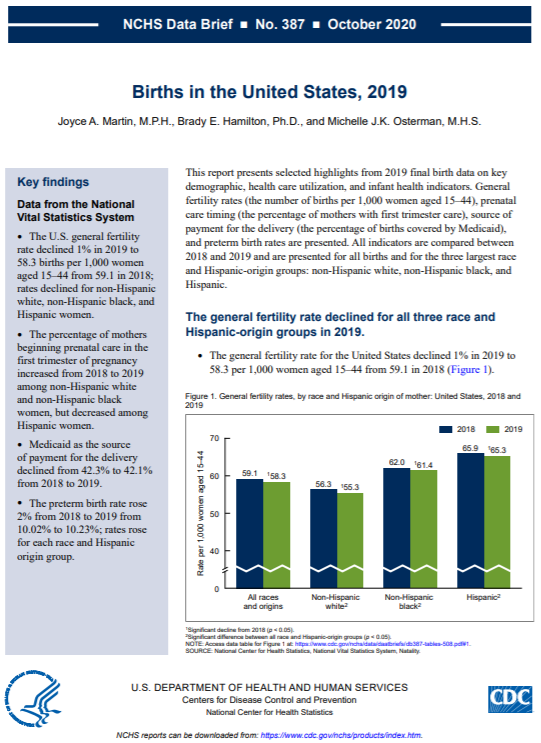Births in the United States, 2019
Posted on by A new NCHS report presents selected highlights from 2019 final birth data on key demographic, health care utilization, and infant health indicators.
A new NCHS report presents selected highlights from 2019 final birth data on key demographic, health care utilization, and infant health indicators.
General fertility rates (the number of births per 1,000 women aged 15–44), prenatal care timing (the percentage of mothers with first trimester care), source of payment for the delivery (the percentage of births covered by Medicaid), and preterm birth rates are presented.
All indicators are compared between 2018 and 2019 and are presented for all births and for the three largest race and Hispanic-origin groups: non-Hispanic white, non-Hispanic black, and Hispanic.
Findings from the Report:
- The U.S. general fertility rate declined 1% in 2019 to 58.3 births per 1,000 women aged 15–44 from 59.1 in 2018; rates declined for non-Hispanic white, non-Hispanic black, and Hispanic women.
- The percentage of mothers beginning prenatal care in the first trimester of pregnancy increased from 2018 to 2019 among non-Hispanic white and non-Hispanic black women, but decreased among Hispanic women.
- Medicaid as the source of payment for the delivery declined from 42.3% to 42.1% from 2018 to 2019.
- The preterm birth rate rose 2% from 2018 to 2019 from 10.02% to 10.23%; rates rose for each race and Hispanic origin group.
Posted on by
Categories Uncategorized
Page last reviewed: October 9, 2020
Page last updated: October 9, 2020
Content source:
CDC, National Center for Health Statistics

